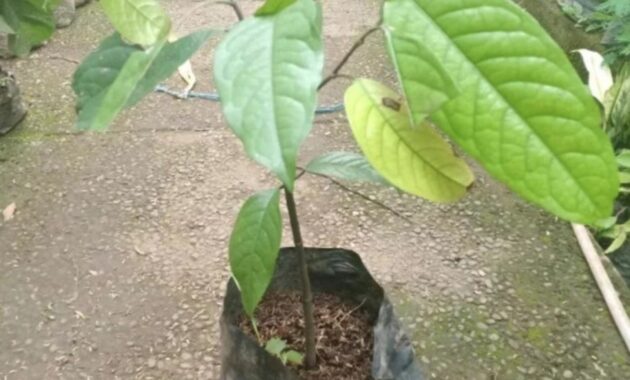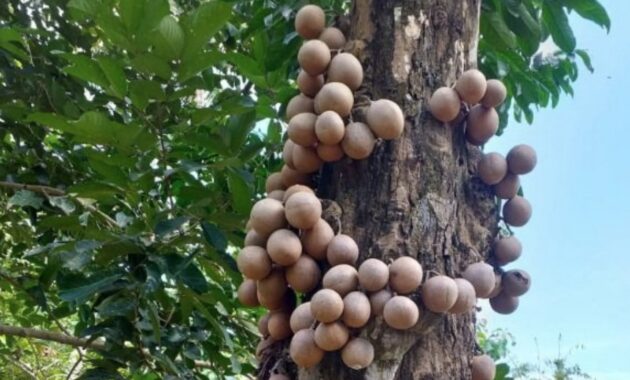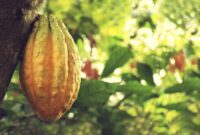
Have you ever heard of the Stelechocarpus burahol? If not, don’t worry; you’re not alone! I stumbled upon this fascinating plant during a trip to Southeast Asia, and let me tell you, it was love at first sight (and bite!). This tropical fruit tree, also known as the burahol fruit tree or screwpine, has so much to offer. Whether you’re a gardening enthusiast or just curious about unique plants, this post will delve into everything you need to know about Stelechocarpus burahol.
What is Stelechocarpus burahol?
Stelechocarpus burahol is a flowering plant in the Pandanaceae family, native to tropical regions of Southeast Asia. It’s known for its striking appearance and delicious fruits. The tree can grow up to 15-20 meters tall and is characterized by its long, narrow leaves that grow in a rosette pattern. The unique flowers and fruits that develop are a sight to behold!
Characteristics of Stelechocarpus burahol
- Scientific Name: Stelechocarpus burahol
- Common Names: Burahol fruit, screw pine
- Native Range: Found primarily in Indonesia, Malaysia, and surrounding regions.
- Height: Can grow between 15-20 meters (approximately 50-65 feet).
- Leaves: Long, narrow, and lush green, often resembling those of the more commonly known pandanus plant.
The Fruit of Stelechocarpus burahol
One of the standout features of this tree is its fruit. The burahol fruit is small, round, and typically turns from green to a vibrant orange as it ripens. When I first tasted it, I was surprised by its sweet, aromatic flavor—a delightful mix between a mango and a ripe banana. Here are some important points about the fruit:
- Taste: Sweet and aromatic, perfect for snacking or adding to desserts.
- Nutritional Benefits: Rich in vitamins and antioxidants, it’s a healthy treat.
- Culinary Uses: Can be eaten fresh, made into jams, or even used in traditional desserts. I once had a burahol fruit pudding at a local market, and it blew my mind!
Growing Stelechocarpus burahol
If you’re interested in adding this tropical beauty to your garden, here’s what I’ve learned about its cultivation:
- Climate Requirements: Stelechocarpus burahol thrives in tropical climates with ample rainfall. If you live in a similar climate, you’re in luck! If not, consider growing it in a greenhouse or indoors.
- Soil Preferences: It prefers well-draining, loamy soils rich in organic matter. I made the mistake of planting mine in heavy clay soil, and it struggled. Adding compost can significantly improve the soil structure.
- Light Conditions: Full sun to partial shade is ideal for the burahol tree. When I placed mine in dappled sunlight, it thrived and produced more fruits.
- Watering Needs: Regular watering is essential, especially during dry spells. However, be careful not to overwater, as this can lead to root rot. I learned this the hard way and lost my first plant due to soggy soil.
Propagating Stelechocarpus burahol
If you want to expand your collection or share the love with friends, propagation is quite straightforward:
- Seed Propagation: You can grow Stelechocarpus burahol from seeds. Collect the seeds from ripe fruits and plant them in a seedling mix. Keep them moist and in a warm location. Germination can take a few weeks, so be patient!
- Cuttings: Alternatively, you can propagate through stem cuttings. I’ve had success using semi-hardwood cuttings, dipping them in rooting hormone before planting them in well-draining soil.

Caring for Your Stelechocarpus burahol
To keep your burahol tree healthy and productive, consider these care tips:
- Fertilizing: Feed your tree with a balanced fertilizer during the growing season. I typically use a 10-10-10 formula every couple of months, which helps promote lush foliage and abundant fruit.
- Pruning: Regular pruning can help shape the tree and remove any dead or damaged branches. I like to do this in the late winter or early spring before new growth begins.
- Pest Management: Watch out for common pests like aphids and scale insects. I once noticed some sticky residue on my plant and realized I had a pest problem. A good spray of neem oil did wonders!
Common Challenges
Like any plant, Stelechocarpus burahol can come with its own set of challenges:
- Pests: As mentioned earlier, aphids and scale can be pesky. Regularly inspecting your plant can help catch these pests early.
- Disease: Root rot is a significant risk if overwatered. Make sure your soil drains well and avoid letting the roots sit in water.
Culinary Uses and Benefits
The fruit of Stelechocarpus burahol isn’t just tasty; it also packs a nutritional punch. Here are some benefits and culinary uses:
| Nutritional Benefit | Description |
|---|---|
| Rich in Vitamins | Contains vitamins A and C, beneficial for the immune system. |
| Antioxidants | Helps combat free radicals and reduce inflammation. |
| Hydration | High water content makes it a refreshing snack. |
- Culinary Delights: The fruit can be eaten raw or used in a variety of dishes. I love making smoothies with burahol fruit blended with yogurt and a splash of honey.
Final Thoughts
The Stelechocarpus burahol plant is a hidden treasure in the world of tropical gardening. Its unique fruit, lush foliage, and relatively easy care make it an excellent choice for both novice and experienced gardeners. Plus, who wouldn’t want to impress their friends with a fruit they’ve likely never tasted before?
So, if you find yourself in a tropical area, or if you’re lucky enough to have a greenhouse, consider adding this delightful tree to your collection. You won’t regret it! Happy planting, and may your Stelechocarpus burahol thrive!
Feel free to ask if you need more information or adjustments!



